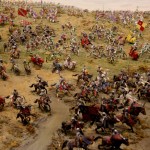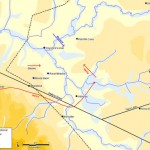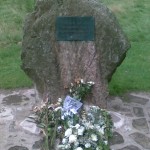 For hundreds of years people have thought the Battle of Bosworth, the final clash in the War of the Roses and the last battlefield to see the death of a British monarch (Richard III), took place on Ambion Hill.
For hundreds of years people have thought the Battle of Bosworth, the final clash in the War of the Roses and the last battlefield to see the death of a British monarch (Richard III), took place on Ambion Hill.
After almost four years of careful investigations undertaken by the Leicestershire County Council and the battlefield Trust, experts now believe the battle actually took place a full mile away.
Richard Knox, curator of Bosworth Battlefield, said it was now likely that the proper site was on low-lying ground between the villages of Shenton, Stoke Golding and Dadlington, first proposed by the historian Peter Foss in 1990.
The key to the mystery is likely to be finding the former marshland that Henry is said to have used to his advantage to attack the vastly larger army of his enemy from the flanks.
Investigations there have found ancient names given to the area such as Fenn Hole and Fenn Meadow, and a team is currently scouring the area with metal detectors.
 Tests have apparently conclusively demonstrated that Ambion Hill cannot be the battlefield, but there is another spot also in contention besides the Foss hypothesis: a field in Atherstone, where documentary evidence indicates that Henry the VII remunerated farmers for damage done “at our late victorious field”.
Tests have apparently conclusively demonstrated that Ambion Hill cannot be the battlefield, but there is another spot also in contention besides the Foss hypothesis: a field in Atherstone, where documentary evidence indicates that Henry the VII remunerated farmers for damage done “at our late victorious field”.
We won’t know the final results of the survey until early next year. Hopefully some battle artifacts will be found on one of the possible sites which confirms without question where the Battle of Bosworth actually took place.
 This is a bit of a bummer for the Leicestershire County Council which has built a large visitor’s center on Albion Hill and installed a huge commemorative stone marker on the putative spot where Richard III was killed.
This is a bit of a bummer for the Leicestershire County Council which has built a large visitor’s center on Albion Hill and installed a huge commemorative stone marker on the putative spot where Richard III was killed.
Still, they’re the ones sponsoring the study because they want to know the truth, as far as it is possible to uncover given the fragmentary and conflicting medieval and Tudor sources.
On the bright side, if it does turn out to be one of the other locations, they can keep the field free of visitor’s centers and parking lots and whatnot. The new visitor’s center at the battle of Gettysburg was intentionally built away from the battlefield so the site could be restored to Civil War-era topography.
Maybe they can do something similar once they pinpoint the right spot.